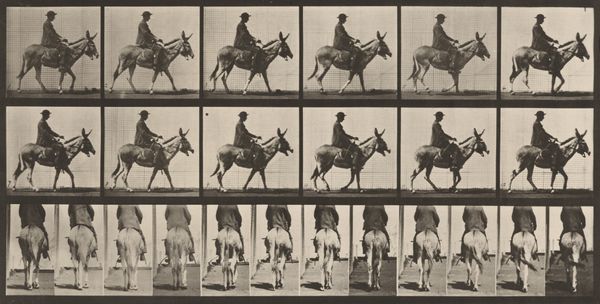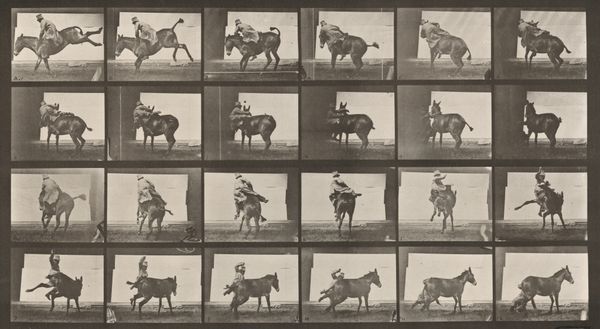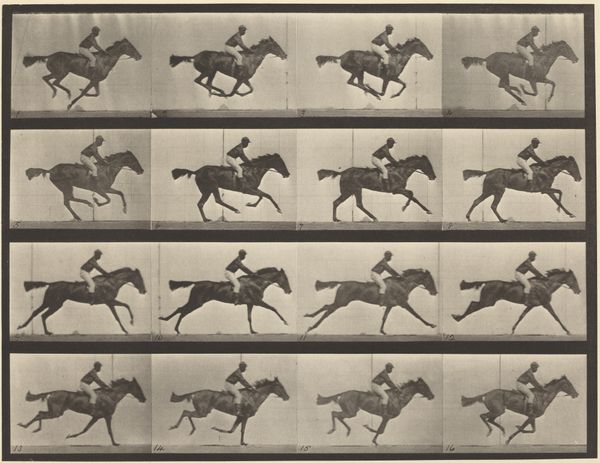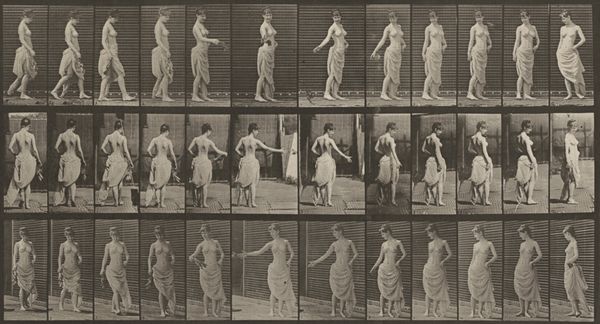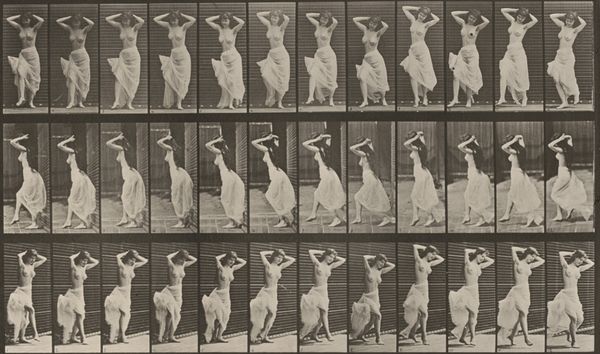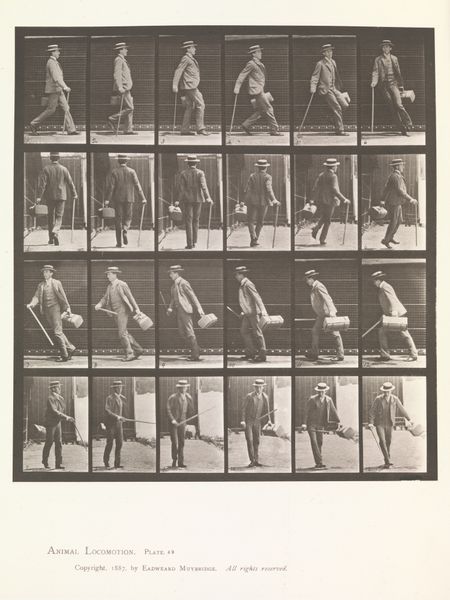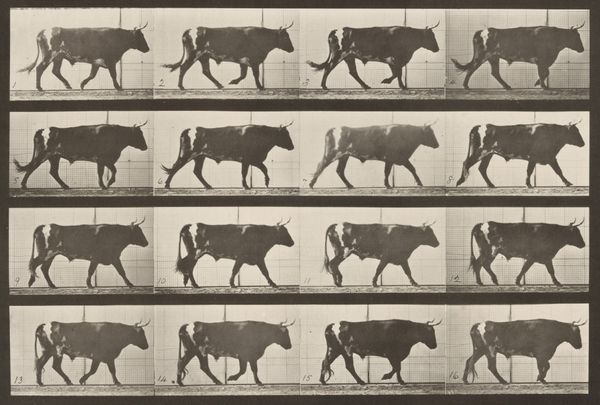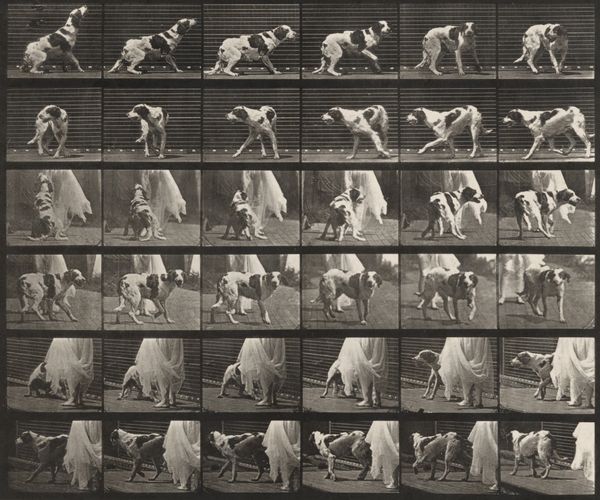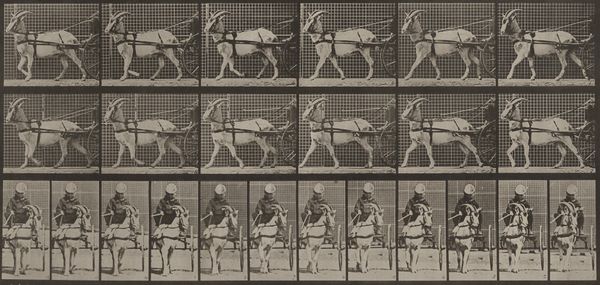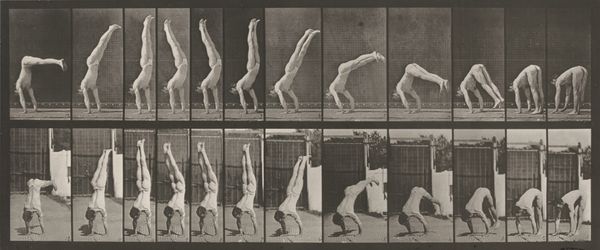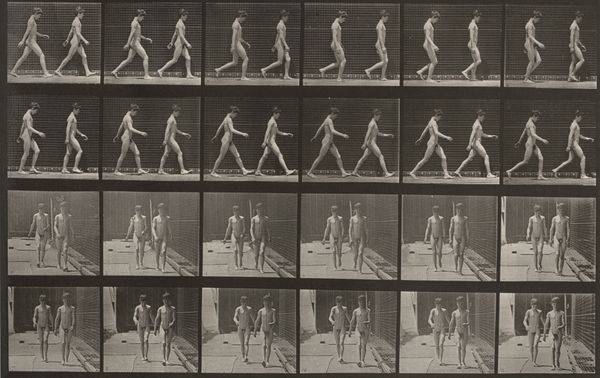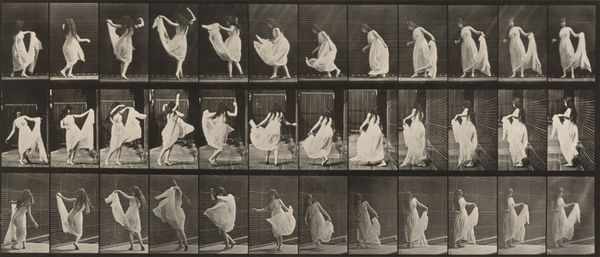
Plate Number 668. Ass; ambling; irregular; saddle; a boy riding, Zoo 1887
0:00
0:00
print, photography, gelatin-silver-print
#
portrait
#
animal
# print
#
photography
#
gelatin-silver-print
#
realism
Dimensions: image: 23.4 × 31.1 cm (9 3/16 × 12 1/4 in.) sheet: 47.3 × 60.1 cm (18 5/8 × 23 11/16 in.)
Copyright: National Gallery of Art: CC0 1.0
Eadweard Muybridge made this photographic plate as part of his series "Animal Locomotion." Muybridge's innovative use of photography captures a boy riding a donkey. This series, produced in the late 19th century United States, was groundbreaking in its scientific approach to studying movement. Before Muybridge, accurately depicting motion was a challenge. His work was funded by institutions interested in understanding animal and human locomotion. It’s important to remember that Leland Stanford, a railroad tycoon and former governor of California, originally commissioned this study to settle a bet about whether all four of a horse's hooves leave the ground simultaneously while galloping. These images were, from the beginning, deeply embedded within systems of power and capital. Understanding the social conditions that fostered Muybridge's work is crucial to interpreting it. The series reflects a broader cultural interest in scientific observation. Delving into the archives, including Stanford's papers and contemporary scientific journals, can shed light on the context in which these images were produced and consumed. In essence, understanding the history behind art helps us to understand the meaning of art.
Comments
No comments
Be the first to comment and join the conversation on the ultimate creative platform.
